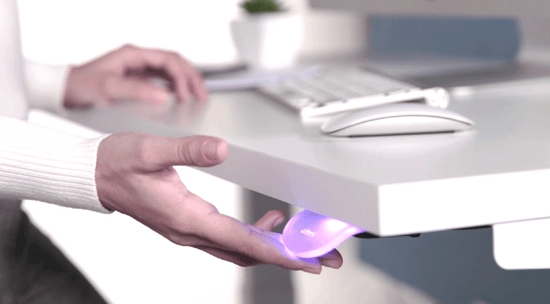Panels and Screens: How Can They Improve Your Office Space?
In an office environment, privacy and organization are fundamental aspects for the well-being and productivity of employees. Elements that fulfill these functions are panels and screens. Both are versatile space dividers that enhance your office's aesthetics and offer multiple practical benefits. In this article, we will explore what a panel is, how it differs from a screen, how they can transform your workspace, and what to consider when choosing between the two:
What is a Panel?

A panel is a portable structure that divides and defines office spaces. Generally, it consists of connected panels that can be mobile or fixed and are made from various materials such as wood, metal, glass, and fabric.
Functions of Panels in the Office
- Providing Privacy
- Space Delimitation
- Noise Reduction
- Aesthetic Improvement
They are ideal for creating personal spaces within a shared office, allowing employees to concentrate without distractions.
They help organize work areas, creating specific zones for different departments or activities.
They act as physical barriers and sound absorbers, contributing to a quieter and more productive environment.
Available in a wide range of designs and colors, panels can complement office decor and reflect the company's identity.
Advantages of Using Panels in the Office
- Flexibility: They allow greater adaptability in the design of the workspace, enabling reconfiguration according to the changing needs of the company.
- Improved Concentration: By providing visual and acoustic privacy, panels help employees focus better on their tasks.
- Efficient Organization: They delimit and organize different areas and departments, facilitating collaboration and communication between teams.
- Style and Customization: They offer the possibility to customize the office with different designs and materials, reflecting the corporate image.
Office Screens vs. Panels: What's the Difference?
Office screens and panels are essential elements in the workspace. However, despite both allowing efficient space division and providing privacy and comfort to employees, they are not the same. Here are their differences so you can determine which suits you best:
Screens:

- They offer some privacy but do not completely isolate sound.
- They add a touch of color and personalization to the office.
- They come in various sizes, from individual office divider panels to larger floor screens.
- Their uses range from creating defined work zones, and separating common areas, to defining temporary spaces.
- In their floor version, they can be easily moved and reconfigured, ideal for flexible spaces and workstations. An example is Gebesa's space dividers.
Office Panels:

- They create more defined divisions, such as Gebesa's modular systems.
- They significantly reduce noise between spaces.
- Models are usually half-height. They can have electrical integrations or conduction capabilities.
- They create organized work zones within reconfigurable module systems.
Choosing:
- It depends on the specific needs of the office. Evaluate your needs and budget to choose the ideal solution. You can combine screens and panels to optimize space and functionality.
Considerations When Choosing Your Space Dividers
1. Material and Durability
Choose materials that are durable and easy to maintain. For example, wooden and metal screens tend to be robust, while acrylic ones offer a modern appearance.

2. Size and Mobility
Consider the size of the panel or screen in relation to the available space to determine what you need (if you want modular systems or just to separate areas).

3. Functionality
Determine whether you need panels or screens to reduce noise or provide visual privacy.
How to Integrate These Elements into Your Office

- Space Design: Plan the layout of modular systems and their panels or screens (especially if they are mobile) to maximize space use and improve functionality.
- Combination with Furniture: Integrate them with existing furniture to create a harmonious and efficient environment.
- Customization: Personalize them by choosing corporate colors to reinforce your company's identity.
Panels and screens are versatile elements that can transform any office into a more organized, private, and aesthetically pleasing space. Evaluate your needs and choose the panels or screens that best suit your office to enjoy an optimized work environment.




